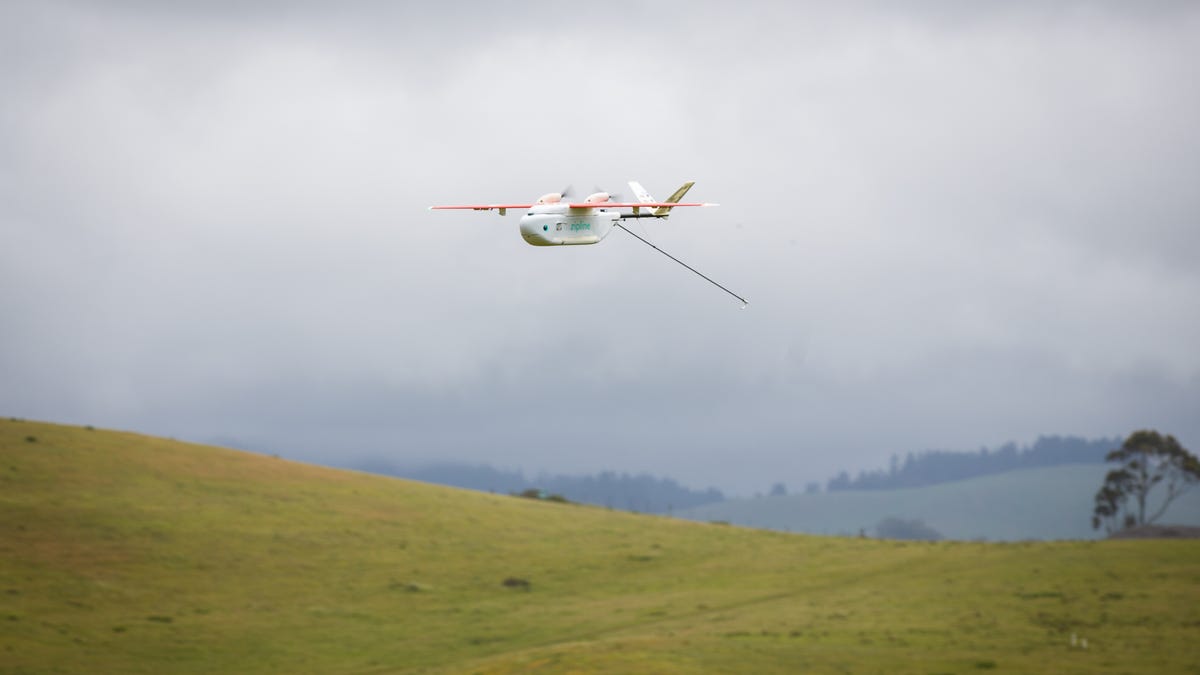 Why You Can Trust CNET
Why You Can Trust CNET The real reason to get pumped about drone delivery
Hint: It has nothing to do with pizza.

Over the past couple years there's been a steady stream of stories about unmanned aerial vehicles (UAV), aka drones , being used for deliveries. There was the Domino's Pizza delivery in New Zealand, the 77 7-Eleven drops to customers in Reno, Nevada, and Google parent company Alphabet's Chipotle burrito shipments to Virginia Tech students, to name a few.
Click for more stories.
Though these deliveries were basically public tests used to gather data -- and attract attention -- for the companies behind them, I can't help but think using such amazing machines for personal deliveries is a little ridiculous.
Along with that, there are so many hurdles -- from airspace congestion and regulations, to payload weight and flight-time limitations, to weather conditions -- that it's just not efficient or economical when, in general, a single car, van or truck can accomplish much more.
For example, Amazon's Prime Air service, currently in beta testing in the UK, is limited to customers within several miles of a shipping facility for packages weighing less than five pounds (2.3 kg).
Not only does this limit what can be delivered and to whom, it's not even possible in the US with current FAA restrictions, which includes keeping the drone in line of sight while flying -- defeating the purpose of aerial delivery.
OK, so delivering pizza isn't the thing that makes drones really valuable and cool, but here's what is: quickly delivering emergency food, medicine and supplies in disaster zones, to rural and remote areas, up mountains or out in the ocean. Delivery drones that can get where trucks and pricey helicopters can't will become indispensable. They're not only going to save time and money, they'll save lives.
Safety first
Though not as attention-grabbing as burritos for college students, UPS and drone maker CyPhy Works staged a delivery from Beverly, Massachusetts to an island three miles off the Atlantic coast to deliver an inhaler to a child on the island. Likewise, delivery service Flirtey, the company behind the 7-Eleven deliveries, has also demonstrated how its drones can be used for ship-to-shore deliveries of life-saving aid to coastal regions. Land Rover's Project Hero combines a roof-mounted drone for disaster response with a new 2017 Discovery SUV and is currently being used by the Austrian Red Cross. Then there's Zipline, which is already making medical deliveries by drone to hospitals across Rwanda.
Along with saving lives, commercial delivery drones are going to be able to keep things like utilities and manufacturing plants up and and running when systems need to be repaired or parts replaced. Instead of waiting days for a part to arrive, a delivery drone can be given a flight plan and sent on its way, all on its own.
There are companies working on the commercial drone hurdles I mentioned earlier, too. On May 5, a Nevada UAV consortium set a record flying a fixed-wing drone nearly 100 miles for a package delivery using cellular connectivity. Similarly, Qualcomm has been running trials using 4G LTE networks to safely guide UAVs beyond visual line of sight and below 400 feet. What this will eventually mean is that deliveries will be more accurate and safer via a constant commercial mobile network connection between the operator and the drone, and those deliveries can happen at greater distances.
And, NASA just announced new technology it developed for autonomous crash management to potentially help delivery drones land safely in highly populated areas should something go wrong.
In the end, the technologies used in delivery drones are going to be the same regardless of their cargo. I guess I'm just hoping the next time you see a story about a drone delivering sunscreen, you sit back and think about how that same flying robot is capable of delivering so much more.

